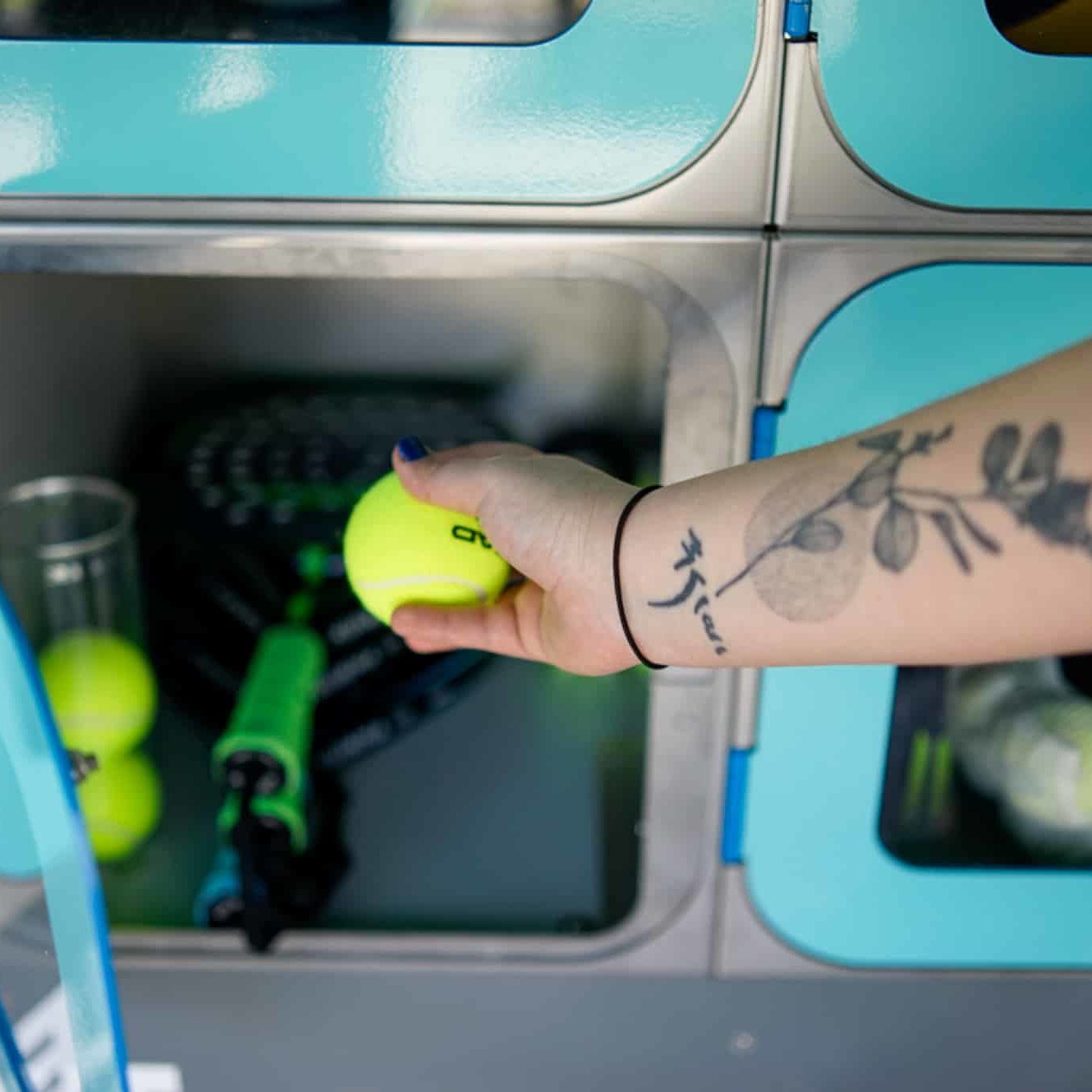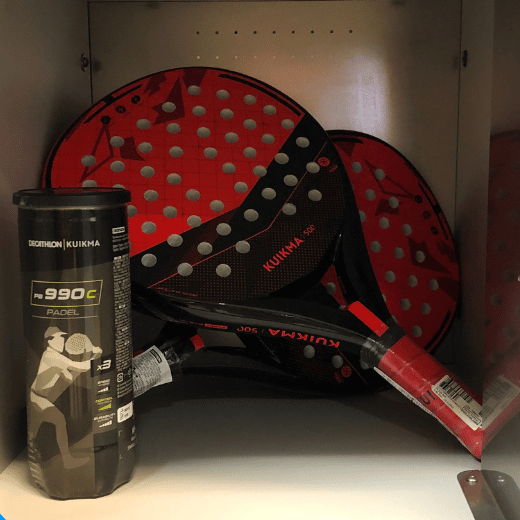Padel kit
Rackets | Balls
What is padel?
Padel is a hybrid sport that combines elements from various racket games, such as tennis, squash, table tennis, and pelota. This sport, derived from tennis, is played on a smaller court (20m x 10m), surrounded by walls and fences. The point system is similar to tennis, but the balls used are slightly less inflated. It is played exclusively in doubles, and serves are done overhead. The main difference from tennis is the ability to play balls after they bounce off the walls or fences, similar to squash.
How to play padel?
Serves are executed underhand, without exceeding waist height, and must begin from right to left. During the rally, the ball can bounce on the ground and hit various surfaces, such as the walls, fences, or even the door handle, resulting in unpredictable trajectories. A second bounce on the ground results in a point loss for the opponent, as does the ball going out of bounds after the first bounce. However, if the ball bounces off a wall and comes back into the striker’s side of the court, it scores a point. If a ball crosses the net and touches a surface other than the ground first, it is a fault for the server. Points are counted using the classic tennis method (15, 30, 40, game, set, match), and a match is played in two winning sets.
Padel kit
Rackets | Balls
What is padel?
Padel is a hybrid sport that combines elements from various racket games, such as tennis, squash, table tennis, and pelota. This sport, derived from tennis, is played on a smaller court (20m x 10m), surrounded by walls and fences. The point system is similar to tennis, but the balls used are slightly less inflated. It is played exclusively in doubles, and serves are done overhead. The main difference from tennis is the ability to play balls after they bounce off the walls or fences, similar to squash.
How to play padel?
Serves are executed underhand, without exceeding waist height, and must begin from right to left. During the rally, the ball can bounce on the ground and hit various surfaces, such as the walls, fences, or even the door handle, resulting in unpredictable trajectories. A second bounce on the ground results in a point loss for the opponent, as does the ball going out of bounds after the first bounce. However, if the ball bounces off a wall and comes back into the striker’s side of the court, it scores a point. If a ball crosses the net and touches a surface other than the ground first, it is a fault for the server. Points are counted using the classic tennis method (15, 30, 40, game, set, match), and a match is played in two winning sets.





